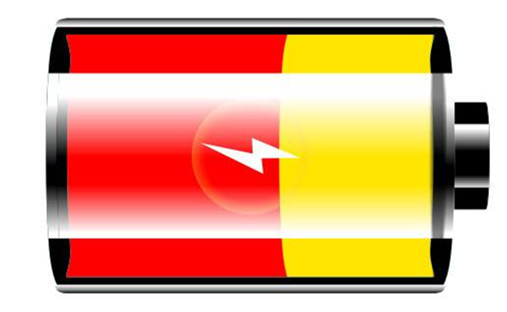How much lithium is in a lithium ion battery?
Nov 08, 2019 Pageview:1649
The lithium-ion battery has transformed the consumption of metals and minerals over the past two decades. The landscape is expected to change further as the Li-ion battery evolves from portable applications such as the mobile phone with a small 10 watt-hour (Wh) pack to the 50–100 kWh battery-powered electric vehicle, And the monster Energy Storage System (ESS) with battery banks of up to 10 MWh. Only a small percentage of cobalt and lithium entered batteries at the beginning of the millennium, but by 2015, 46% of cobalt and 32% of lithium entered Li-ion production. There was no significant effect on graphite, nickel manganese, copper and aluminium. Lithium -Ion batteries do not use pure lithium, which is lithium metal instead Lithium salts are used for storage in lithium-ion cells via intercalation species growth.
Approximately 70% of the lithium in the world comes from brine (salt lakes); the rest comes from hard rock. Research institutions are developing technology for the extraction of lithium from seawater. Chile is the largest lithium producing country whereas China is the largest lithium consumer and is suspected of hoarding that is why the Chinese believe that future cars should run on Li-ion batteries and that they need an unbridled supply of lithium.
What materials are in a lithium ion battery?
Lithium is the lightest of all metals, possesses the greatest electrochemical potential and delivers the greatest specific energy per weight. Rechargeable lithium metal batteries on the anode (positive electrodes) could provide extraordinarily high densities of power, but cycling created undesirable dendrites on the anode which could penetrate the separator and trigger an electrical shortness.
The materials used in lithium ion batteries are Lithium, cobalt, nickel, manganese, graphite, copper and aluminium which are nonferrous metals and also the minerals are heavily used in Li-ion batteries. As such, cathodes and collector-specific developments are particularly relevant for the use of non-ferrous metal material, while anodes dictate the use of graphite so the main materials that is used in lithium ion battery is positive electrode that is anode, negative electrode which is cathode and an electrolyte for which any chemical is used.
All materials used in the battery have a common theoretical strength, and the secret to high capacity and higher power supply lies mainly in the cathode. Lithium Cobalt Oxide (or Lithium Cobaltate), Lithium Manganese Oxide (also known as spinel or Lithium Manganate), Lithium Iron Phosphate, and Lithium Nickel Manganese Cobalt (or NMC) * * and Lithium Nickel Cobalt Aluminium Oxide (or NCA) are common cathode materials. Whereas the common anode material which is used in Li-ion battery is graphite.
How much lithium is in the world?
Approximately 15 million tons of lithium reserves have been estimated in the world, while 65 million tons of known resources are reasonable. The Global demand for lithium metal is expected to increase to 49,350 metric tons by 2019 and 8.9 percent per year. The largest lithium producing country in the world is Chile with 14,100 tons secondly Argentina with the production of 5,500 tons and the third largest lithium producing country is China with 3,000 tons.
We can reasonably expect that as market demand of lithium is increasing and so the lithium reserves and resources will increase too. But we can expect to reach a peak in production at some point, as with all finite resources. However, we can use the recycled lithium in batteries as there is no as such rule to use pure lithium metal in batteries of such devices. While lithium-ion batteries are helpful in encouraging some green actions, it should be remembered that the batteries themselves are not yet "environmentally friendly." Nevertheless, compared to the alternative of using fossil fuels, lithium batteries are far ahead.
How do you calculate the lithium content in a battery?
Common consumer batteries such as laptops, cell phones, tablets and power tools are typically the devices in which lithium ion batteries are used. In order to calculate the content of lithium in a battery given formulas shown below should be used which is also very necessary for those shipping lithium batteries of industrial, military or larger format.
For non-rechargeable lithium ion batteries
a)Calculate lithium content (grams).
· The formula used to calculate lithium content is:
Ah per cell * 0.3 grams * no. of cells
· Most batteries are not measured in ampere hours (Ah), they are rated in milli-ampere hours (mAh). Milliampere hour is an ampere hour one thousandth.
· Divide the mAh by 1,000 to calculate the Ah.
Example: The battery you want to ship is rated at 2,500 mAh per cell and contains 6 cells:
· Divide 2,500 mAh by 1,000 to be rated in Ah:
2,500 mAh ÷ 1,000 = 2.5 Ah
· To determine amount of lithium in each cell multiply Ah by 0.3:
0.3 * 2.5 Ah = 0.75 gms of lithium in each cell.
· Now, Multiply the quantity of lithium in each cell by the number of cells in each battery:
0.75 gms / cell * 6 = 4.5 grams of lithium in the battery
Conclusion: 4.5 g for battery packs is below the total permitted lithium content of 25 g; therefore, the battery can be delivered in the Big Green Box.
For rechargeable lithium ion batteries
Calculate Rated Capacity (watt hour)
· The formula that is used to determine the rated capacity is:
Volts * ampere hour (Ah) = watt hours
· Many batteries are not rated in ampere hours (Ah), they are rated in milliampere hours (mAh). Milliampere hours is an ampere hour one thousandth.
· Divide the mAh by 1,000 to determine the Ah.
Example: The battery pack you want to ship is rated at 11.1 volts and 4,400 mAh per cell:
· Divide 4,400 mAh by 1,000 to be rated at Ah:
4,400 mAh ÷ 1000 = 4.4 Ah ·
· To calculate the watt hours in this battery, multiply 11.1 volts by 4.4 ampere hours:
11.1 V x 4.4 Ah = 48.8 Wh
Conclusion: 48.8 Wh for battery packs is below the total allowable rated capacity of 300 Wh; hence the battery can be delivered in the Big Green Box.
- Prev Article: How long will lithium batteries hold a charge?
- Next Article: Lithium Metal Batteries Are Measured By
Leave Message
Hottest Categories
-
Hottest Industry News
-
Latest Industry News











